A few of us attended a September opening at the Shooting Gallery featuring SF locals Erik Otto and Kevin Taylor. I was familiar with Erik's marvelous work from our past feature, but was floored that night by his counterpart in the show. Kevin Taylor's massive, lightly-glossed paintings commanded the room, displaying a variety of curious animal interactions. Later that month we sent Oakland-based artist Eric Taggart over to Kevin's studio for a chat.
Tell us about your creative process and the interpretive process that follows.
My creative process begins with a stain, line, loose idea or main character. I might think, “I’d like to make a raccoon painting.” From there, I start to formulate the details. Sometimes I do sketches, but rarely. Usually the painting is more an improvisation than it is a plan- constructing itself as if walking backwards through a maze. During the course of the painting, changes take place and elements get painted over and out until I arrive at a surface that seems balanced. I paint mostly oil on wood, but also fool around with other media. The interpretive process never happens the same way twice. Occasionally, while I’m working, something comes clear and this influences the finished piece, although, mostly, I paint in a trance, using my experience and eye to tell me right from wrong. Once the painting is sitting around, it begs to be pondered and in this stage, begins to unravel.
It’s quite similar to the way two friends discuss last night’s nightmare, which is an uncontrollable yet significant happening.
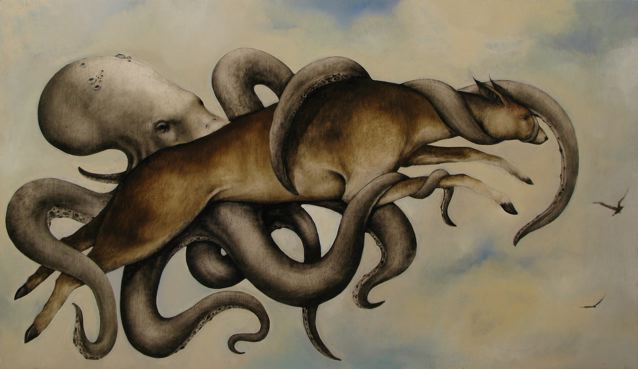
Why do you usually incorporate animals into your work and how do you select them?
I attempt to expose the animal within. My paintings amplify the realization that humans are inherently animals. Only through detaching from nature have we attached ourselves to an idea that we are “civilized” beings. I believe that if humans perceived themselves more as a members of nature rather than managers of nature, we would make wiser decisions in the interest of our habitat. This perspective would help us to better understand and thus avoid our more primal calamities such as war, greed, and overpopulation. The swapping of gender, physics and appendages has to do with revoking the viewer the ability to define and classify my subject. I get a thrill out of blurring characteristics that are normally used to formulate a resolute analysis. Jellyfish, snakes and other recurrent animals are all part of a key cast that effectively manifests a mood, acting as a stable climate within my work. Animals are empty vessels for symbolism and this has been the case for many civilizations throughout time. There is something inherently communicative about certain an animal’s ability to speak through imagery.

Some of your animals seem to be wearing medical masks and others appear bandaged. What do you make of that?
These adornments say something about our plight to remain healthy in a time when the future of our existence seems uncertain and unsettled. It illustrates compassion and hospice towards situations that we have ironically spawned. I see the specimens that are bandaged as healing rather than wounded.
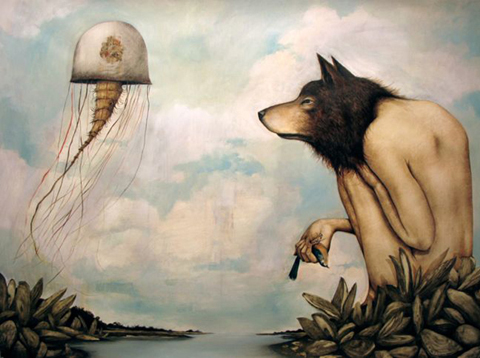
Can you tell us about the "visitation" theme you've mentioned that has been showing up in your work lately?
My explorations of visitation are similar to the ancient idea of a person being visited by a spirit or ghost. In these images, however, the spirit arrives in the form of a specific animal’s entity (the visitor) being presented unto the earth and more accurately, human perception (the visited). The Presentation of Wolf, for instance, documents the exact moment when proto-wolf became “modern” wolf - a time invented and acknowledged only by man in his ongoing folly to categorize and define nature in relation to himself.
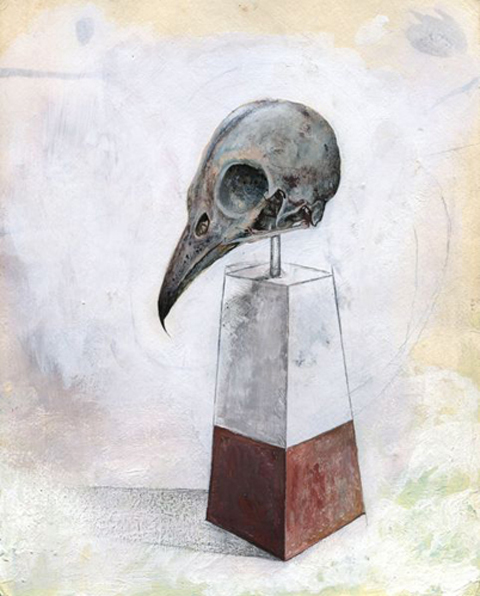
Skulls?
Skulls are pretty cliché, but everyone has one. Sometimes I see a pretty girl and I just think of her skeleton walking around and how that wouldn’t be very attractive any longer. I think skulls attract me, because it’s a reminder of our mortality and of the fact that our bodies are just a big chemical reaction made up of atoms and matter.
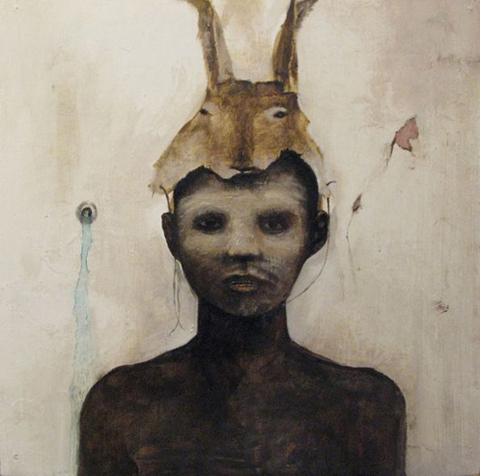
Where does the primal/primitive element of your work come from?
I find the natural and primitive instincts of beings to be quite interesting. The tribal portraits are an extension of my usual approach, but differ in the fact that the imagery employs a more physical and direct marriage of man unto nature.
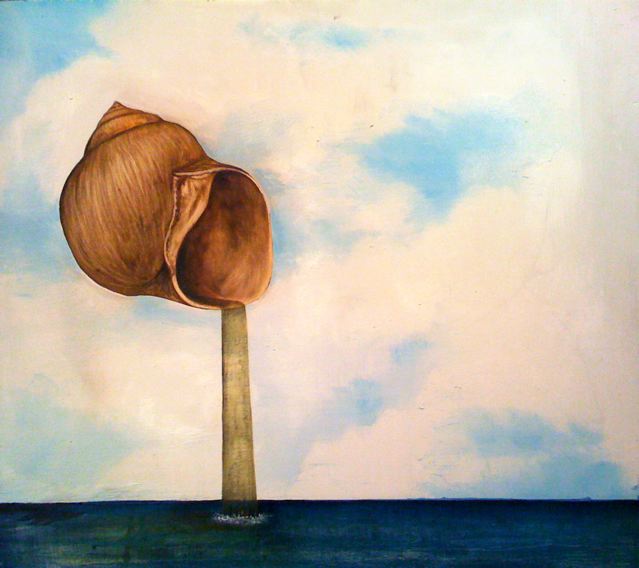
Have you always been a painter?
I have used paint for a long time, but it wasn’t until I took a Modern Art History class with Professor Stephen Myers in college that I realized it could become my life.
Any artists (dead or alive) that you particularly admire?
Naming one means I’d have to name them all, and that would become tiresome for all of us.

Anything else you want to tell us?
When I see a lucky penny on the ground, I just leave it be. This way someone else gets to find it, too. I don’t need to pick it up to own it. I don’t need to own it to access the charm it beholds.
--
Visit Kevin's site here, and if your in the LA area go check out his work in person. Nastic Movements will open November 13, 2009 at Cerasoli Gallery.
Interview by Eric Taggart.